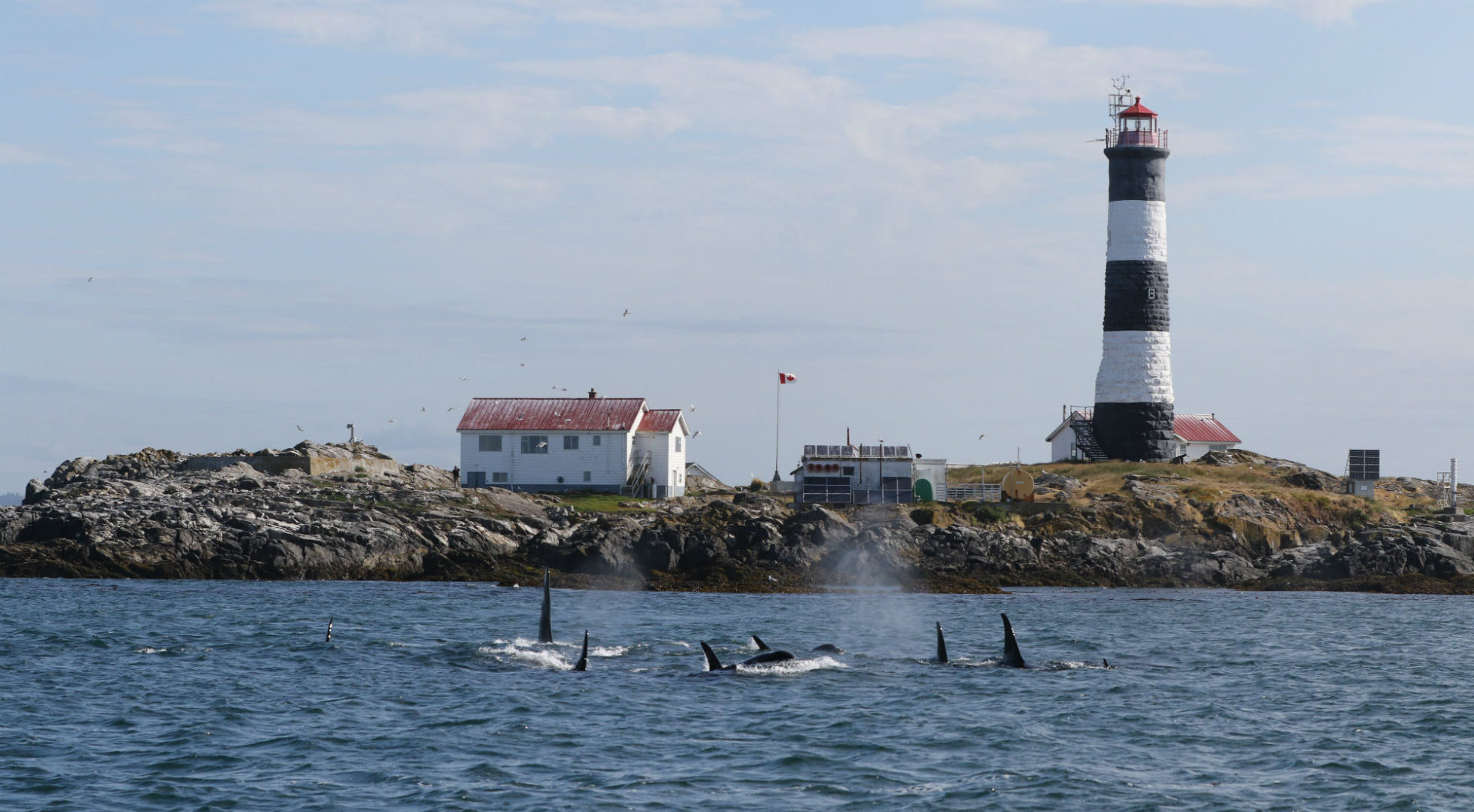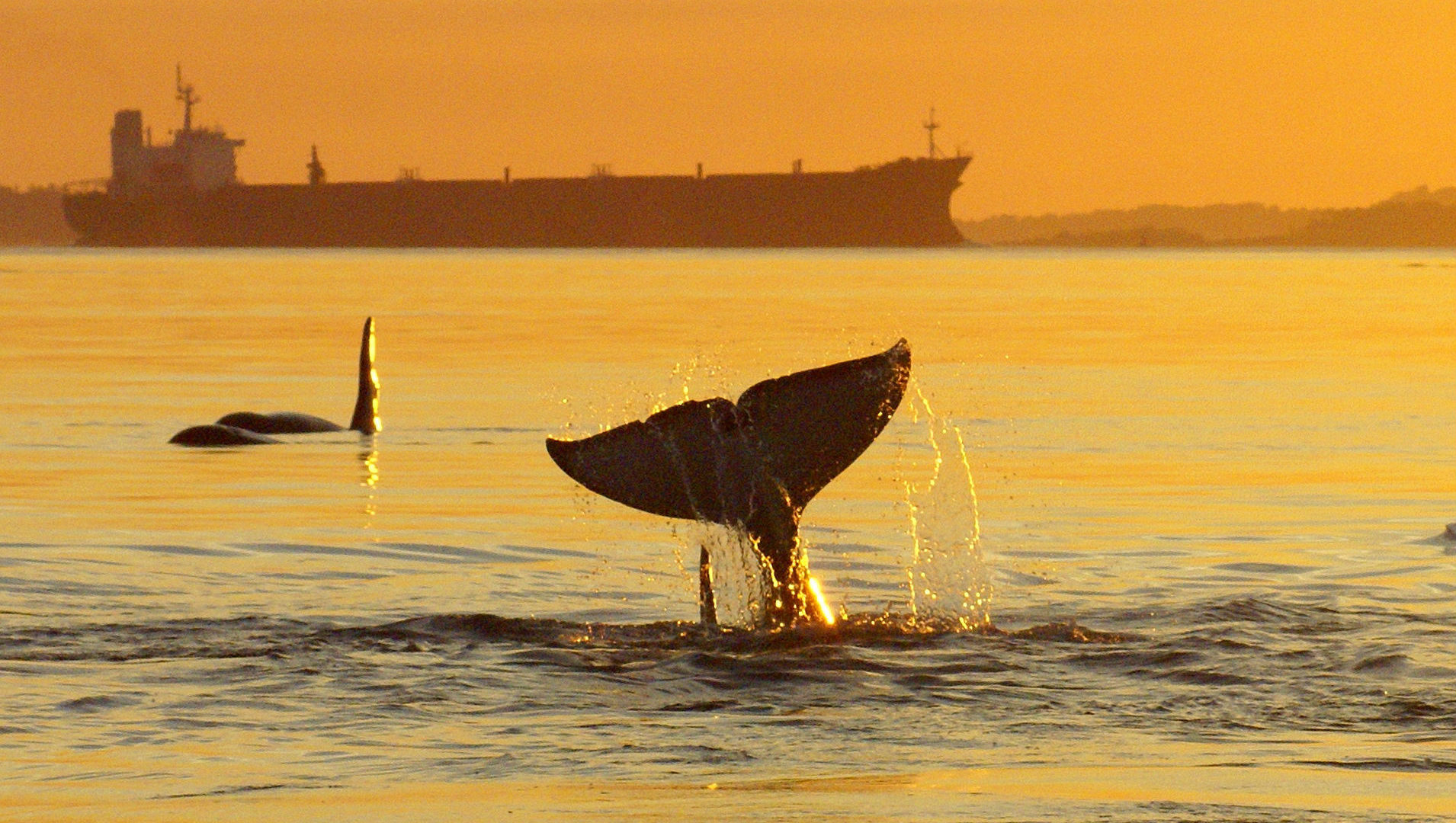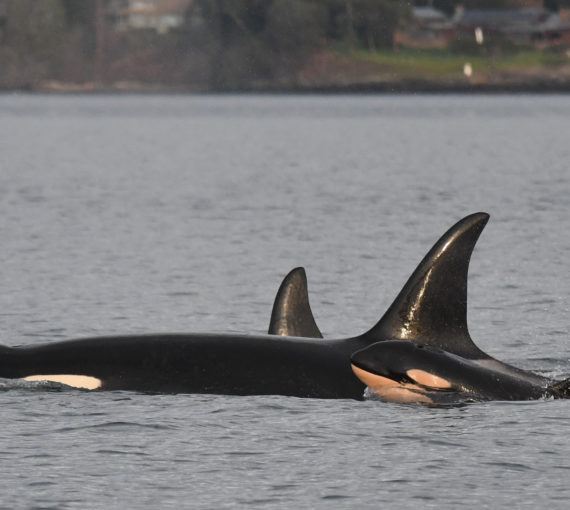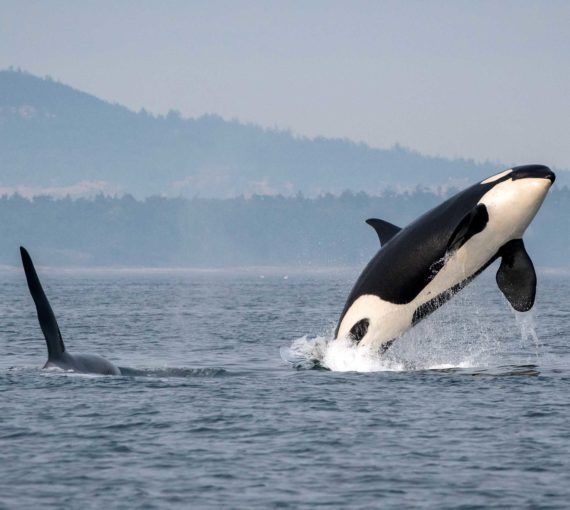Pacific salmon connect ecosystems, bringing energy and nutrients from the ocean up streams to spawning grounds. They feed humans, whales, bears and eagles and fertilize magnificent coastal and inland forests.
Pacific salmon are in trouble and face multiple threats, including habitat destruction and unsustainable fishing practices, all compounded by climate change. Salmon are sensitive to higher temperatures, so even small increases in ocean and river temperatures can harm or kill them.
The fate of the Salish Sea orcas hangs in the balance. These 75 orcas, also known as the southern resident killer whales, are Canada’s most endangered marine mammal. To give these majestic creatures a chance to recover, immediate actions are needed to protect Chinook salmon — the whales’ primary prey — reduce pollution, set up refuges and reduce acoustic noise. Climate change, the Roberts Bank Terminal 2 proposal and a projected seven-fold increase in tanker traffic from the Trans Mountain pipeline expansion make action more urgent than ever.
The interdependence between orcas and salmon illustrates the importance of healthy ocean ecosystems. If we don’t recover declining Chinook salmon, our most iconic whale population likely won’t survive.
Salish Sea orcas
There are only 75 Salish Sea orcas left – and this number is falling. If we don’t help them now, it will be too late. With the strength of one collective voice, we will be heard.
Where we are now
We protect wild Pacific salmon by advocating for government to follow its Wild Salmon Policy and recommendations from the Cohen Commission of Inquiry into the Decline of Sockeye Salmon in the Fraser River. We partner with academics, government decision-makers and other non-profits to make our policy recommendations stronger. Our scientists sit on committees that advise government on how best to reform fisheries and protected-areas policies.
To improve health monitoring, disease reporting and data transparency for open net-pen fish farms to limit their impacts on wild salmon, we work with advisory committees and the aquaculture industry. We alert our supporters about opportunities to contribute to public consultations and to write letters to officials to create pressure for change.
The Species at Risk Act could protect southern resident killer whales and save them from extinction, but only if the federal government implements its 2017 action plan for recovery. Our scientists brief government agencies on science-based solutions to recover this whale population. We amplify our voice by encouraging our supporters to share their ideas during public consultations and to inform elected officials about their concerns.
All about orcas
150
A large male orca weighs nearly as much as two Ford F-150 pickup trucks.
Every hour
One large ship transits the Salish Sea, on average, every hour of every day of every year.
1400
The southern resident killer whale pod requires about 1,400 Chinook salmon every day.
Orca appreciation
Watch this wonderful moment of a family orca encounter — captured on film by Foundation senior research scientist.
All about salmon
7 million years
Large sabretooth salmon fossils indicate that salmon have been in Pacific waters for at least seven million years.
3,000 kilometres
Salmon migrations can stretch up to 3,000 kilometres.
11 of 15
11 of 15 South Coast Chinook populations are highly depleted and require immediate conservation actions.
Expert views
Salish Sea orcas and Chinook nearly absent this season
Sightings of the iconic southern resident orcas have been few and far between for the second year in a row. Just as last year, the whales seem to be mostly staying out of the Salish Sea. Is this the new normal?
Former Senior Science and Policy Analyst
Southern resident orcas need another year of strong protection
As the leaves fall at the water’s edge, it’s time to reflect on what this past spring and summer were like for the Salish Sea Orcas. Their image is ingrained in every part of our life yet today they are struggling to recover in the face of increasing threats.
Former Senior Science and Policy Analyst
The mighty Fraser River and its once abundant salmon are on the edge
Fraser River Chinook salmon are declining rapidly. To safeguard them, the federal government must work with Indigenous communities and stakeholders to create and implement emergency recovery plans. The well-being of our communities, as well as many species in the food chain, depend on it.
Former Senior Science and Policy Analyst
For orcas’ sake, don’t hook a Chinook this summer
This year, southern resident orcas returned to the Salish Sea later than ever recorded, compromising the time they have to feed with minimal interference. People and whole communities should voluntarily keep Chinook salmon in the water to help the southern residents this summer.
Former Senior Science and Policy Analyst






